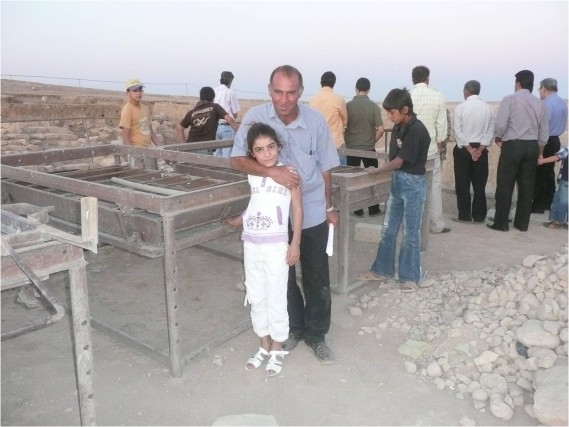
She was then attending an elementary school in the small village of Mozan, next to the archaeological site of Urkesh.
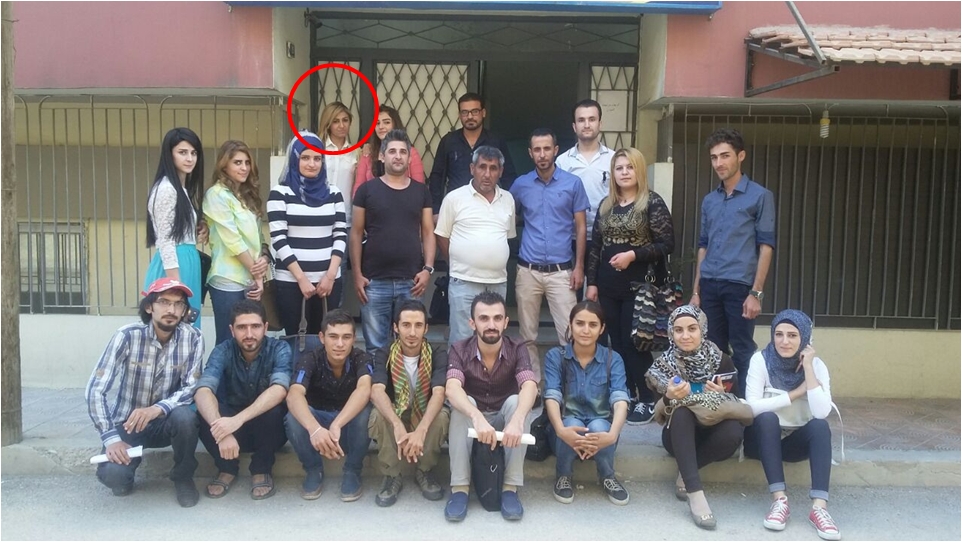
|
Here she is now (2017) studying archeology at the university located in the city near Urkesh – in a group photo at the end of a seminar on Urkesh ceramics. |
Back to top
Primary schools
at the roots of tomorrow
|
In our projects, we firmly believe in the educational value of history: it is through history that people can enrich themselves and grow inwardly. For this reason, we consider it even more significant to spread the interest in history in the younger generations. If everyone's identity depends on the cultural context in which one grew up, teaching and transmitting this context means shaping adults who will be more aware of themselves. The young generations, with their thirst for knowledge and learning, are just waiting to have the necessary tools so as to become aware citizens of the world. History, and together with it also archaeology that helps to reveal it, sheds light on the past, contributes to the understanding of the present and illuminates the future. And we try, as much we can, to help these children to build their own bright future. During the excavations, many children came to the excavation. And we went to their classes. |

|
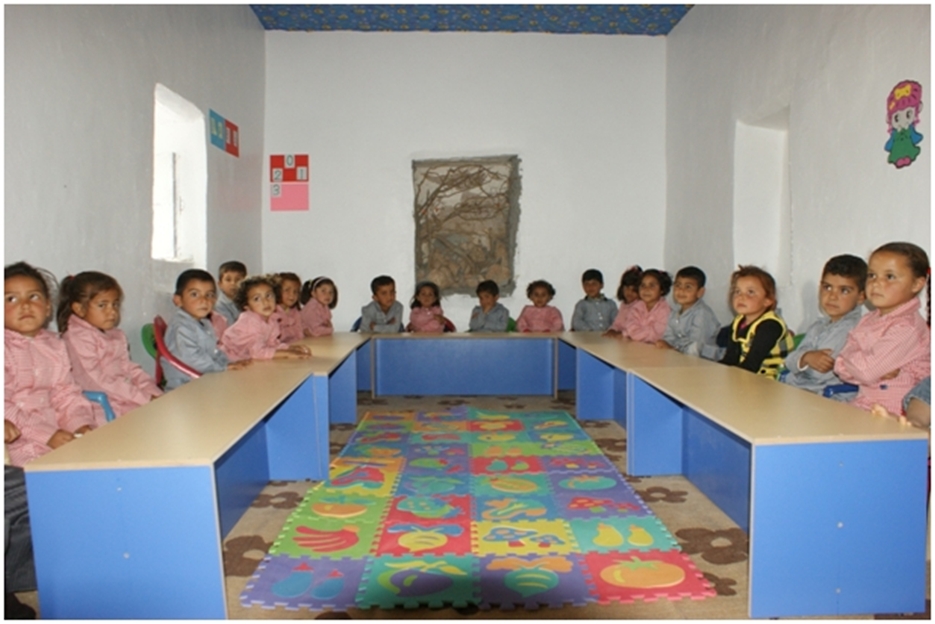
|
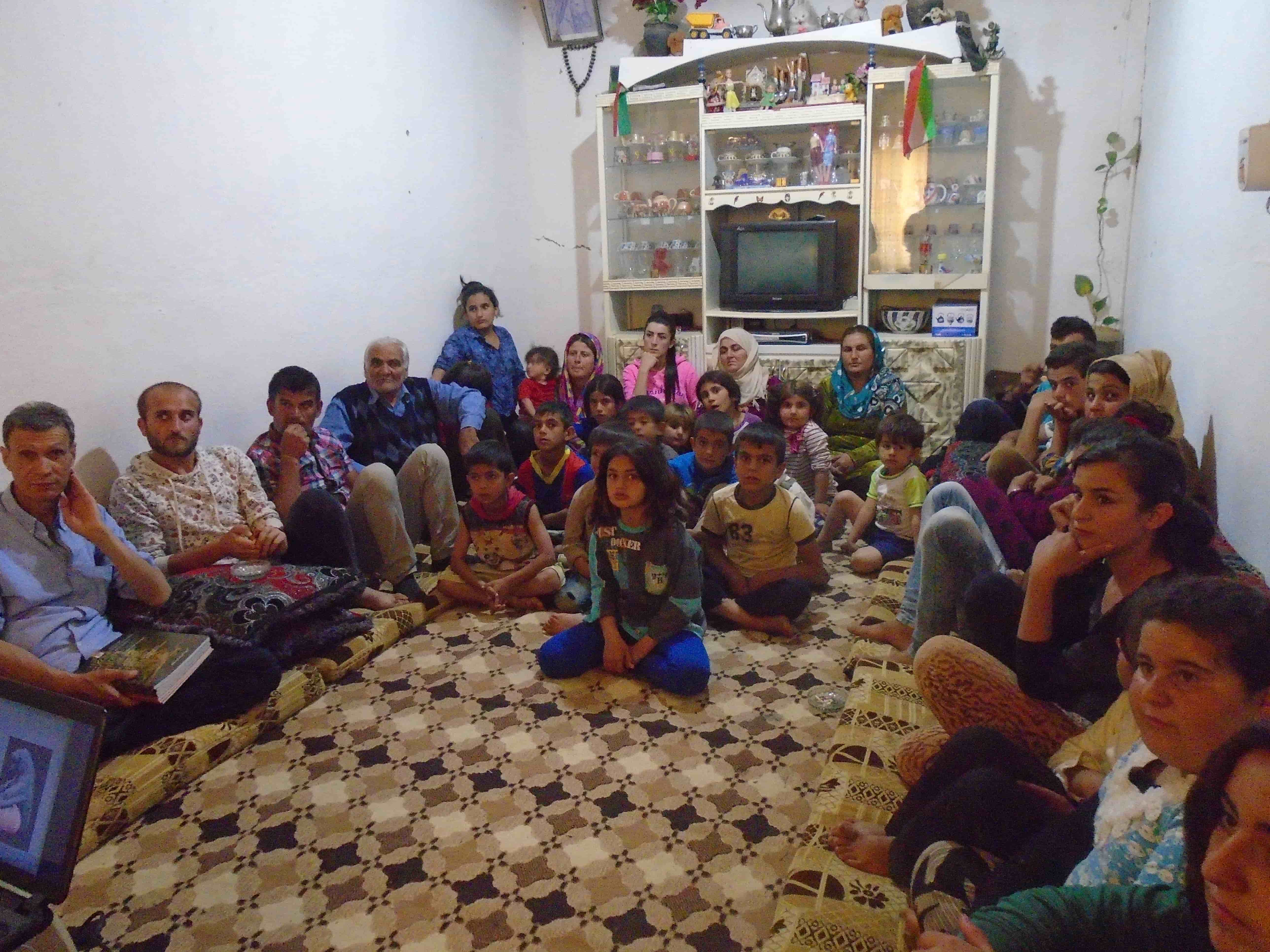
|
|
During these years of war, we are still doing everything we can to reach them. And we do it by telling them from where they come from, who their ancestors are. Here they are, together with their fathers and mothers: no longer in their classrooms, sitting together in the benches with their aprons – but with their legs crossed, sitting on a simple carpet, and yet with the same attentive eyes. These are the images we receive from the numerous villages reached by our awareness campaign: thanks to these meetings, our story about the ancient history of Tell Mozan continues... |
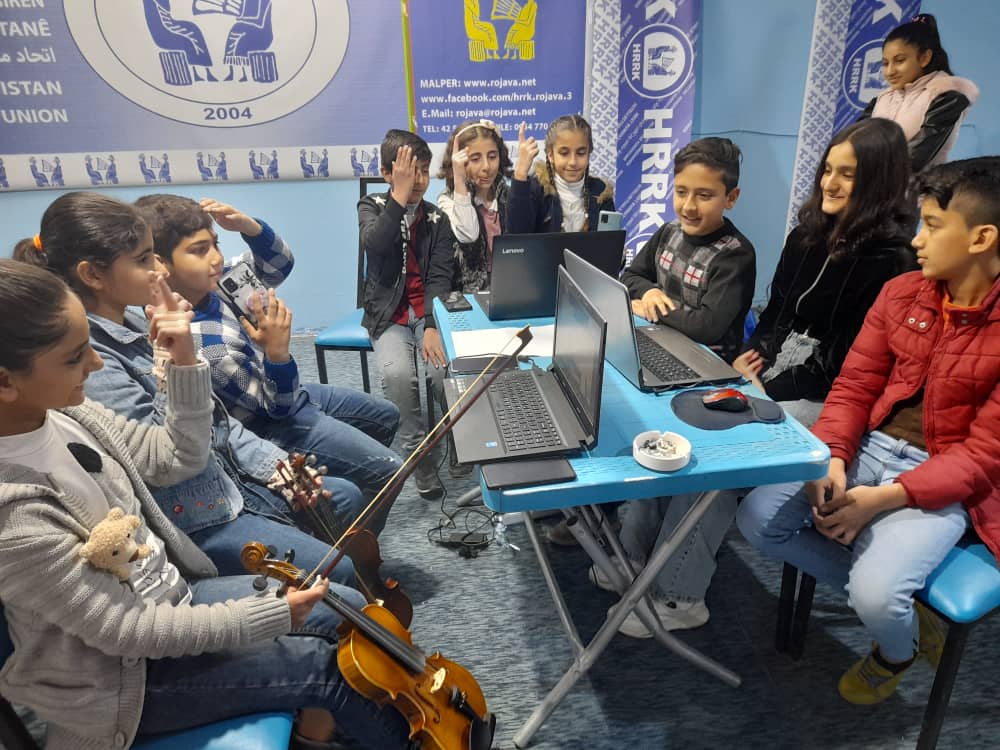 |
|
On Saturday, March 26, 2022, we organized a meeting between the American students from Palm Springs (fourth grade) and the Syrian students from Qamishli (sixth grade). The meeting started with a presentation by the American students in which they talked about their culture in general and what does it mean to them to be American. Then, the Syrian students presented the history of Urkesh. After that, Syrian and American participants exchanged questions regarding each other's culture, life, interests, etc. The meeting was full of passion and curiosity with questions about each country and participants enjoyed presenting their culture using music and other artistic forms. Further information about this event can be found here. |
Back to top
Awareness
bringing Urkesh in every village
|
Thanks to the collaboration, enthusiasm and constant commitment of two of our Kurdish collaborators in Qamishli, we have started a campaign to raise awareness on the past and the landscape, which will touch all the 22 villages that are within the area of the eco-archaeological park. Our goal is to explain to the local communities the importance of archeology, and in particular of Urkesh, for their present identity and for the development of future cultural, social and economic activities linked to the site. We also underline the importance of protecting the landscape and the local traditions – precious resources that should be preserved and maintained in good conditions, despite and actually because of the current difficult times, waiting for the moment when they can become a treasure to be valued for an economic and moral rebirth of the whole area. |
.jpg)
The presentation in the Hajji Nasr village |
.jpg)
Careful attendants in the Sabahia village |
.jpg)
|
The results obtained from the first meetings are extremely encouraging: a large number of men, accompanied by women and children, listen carefully to the presentations of our collaborators, watch videos and images that tell them about Mozan and the Hurrian civilization, hear descriptions of the past excavation campaigns and of the materials found just a few kilometers away from their villages. |
.jpg)
|
At the end of the presentations, the question is almost inevitable: "When will archaeologists return to dig at Urkesh?". Men and women also ask how to preserve the fragile walls of the Tupkish Palace, how to protect the landscape around the archaeological site, which role in this process they have. |
.jpg) Distribution of the publications on Mozan at the end of the presentation in the village of Topez |
Finally, each village receives several copies of our publications in Arabic, English and Kurdish: in this way, we contribute to the creation of small local libraries, where the residents of these villages can go to read and research about the topics that they have heard in Amer's and Ristom's presentations. |
Back to top
Middle schools
learning from the younger ones...
|
Archaeology deals with a distant past. And yet, today archaeology offers us, in Syria as elsewhere, a promise for a young future. A young future, because young people are at the center of those dynamics which let modern society look ahead. A young future, because archaeology participates in it with a new vigor. It is archaeology as such that rediscovers its own youth. Thanks to the initiative of our local collaborators in Syria, as well as our colleagues in Italy and Greece, starting from 2017 we have set in motion a series of unprecedented educational activities. For middle school students, we have activated a unique correspondence, bringing together different groups of young people in different regions of the world. In doing so, we want to contribute to broadening horizons. Intellectual horizons - the knowledge of a particular moment in the past, and the encouragement to appropriate the values of the past - but also more personal horizons - with the development of a greater sense of self-esteem, reinforced by the feeling of being fully recognized by "others" who belong to radically different social and geographical contexts. |
|
School year 2017/2018 Two schools, in two small towns in Syria and Italy. Two groups of kids of the same age, similar in their enthusiasm and spontaneity yet with different sensitivity and habits. |
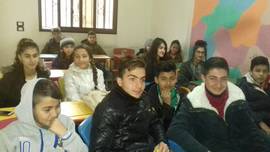
|
The first ones, students of an English school in the city of Qamishli, smile at us, proud in their simple room – aware of being part of a unique project, that will allow them to broaden their horizons. |
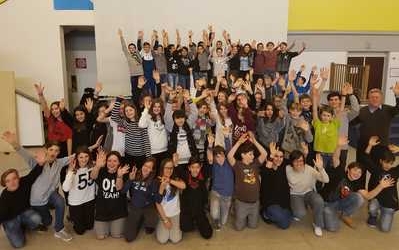
|
The second ones, students of a junior high school in Domodossola, constantly absorbed in a communication network in which it is not easy to orient oneself, are discovering what it means to have their same age and live in a country that is at war. |
|
These kids began to reflect. What is the past? Why should someone study it? What does "past" mean for us, which are the traditions that keeps us bound to previous generations? And why is it important to protect these tradition together with the territory where they originated? They are pondering, and writing. They are exchanging their thoughts, finding out together with their educators how different their sensitivities are. We have described the results of such an extraordinary exchange in the exhibition The Millennia for Today, inaugurated in Rimini in August 2018, and in its catalogue which has been published in Italian, English and Arabic (see here). Some thoughts written by the children are also available on a dedicated page of the AVASA website. |

|
Thanks to our indefatigable colleague in Syria, Amer Ahmad, we offered a class of the al-Salam School in Qamishli the chance to discover something more about their past; indeed, not only about their past, thanks to special lessons on ancient Urkesh and a visit to the site, but also about the culture of ancient Greece. We will be helped in this new initiative by a colleague at the archaeological site of ancient Corinth, who has been working with the Steinmetz Family Foundation for many years. |
| And soon we would like to make sure that these young Syrian students find Greek peers with whom to talk about the past, their roots and their shared cultural heritage... |
|
School year 2021/2022 We had the first meeting in which the Syrian students presented their work about Tell Mozan by the end of July 2021. This meeting was followed by another one on August 14 in which the American students presented their heritage to the Syrian students. The meetings were held on collective basis at the beginning, then the interested ones will proceed into the one-on-one meetings. Both meetings were most impressive in terms of students' preparation and participation. A PDF with the report of these activities can be downloaded here (NB: the pictures referred to in this document are displayed here below). |
| Here some pictures of the events (following the numbering in the report), including ZOOM meetings between Syrian and Americam middle-school students and visits to the site of Urkesh/Tell Mozan: |
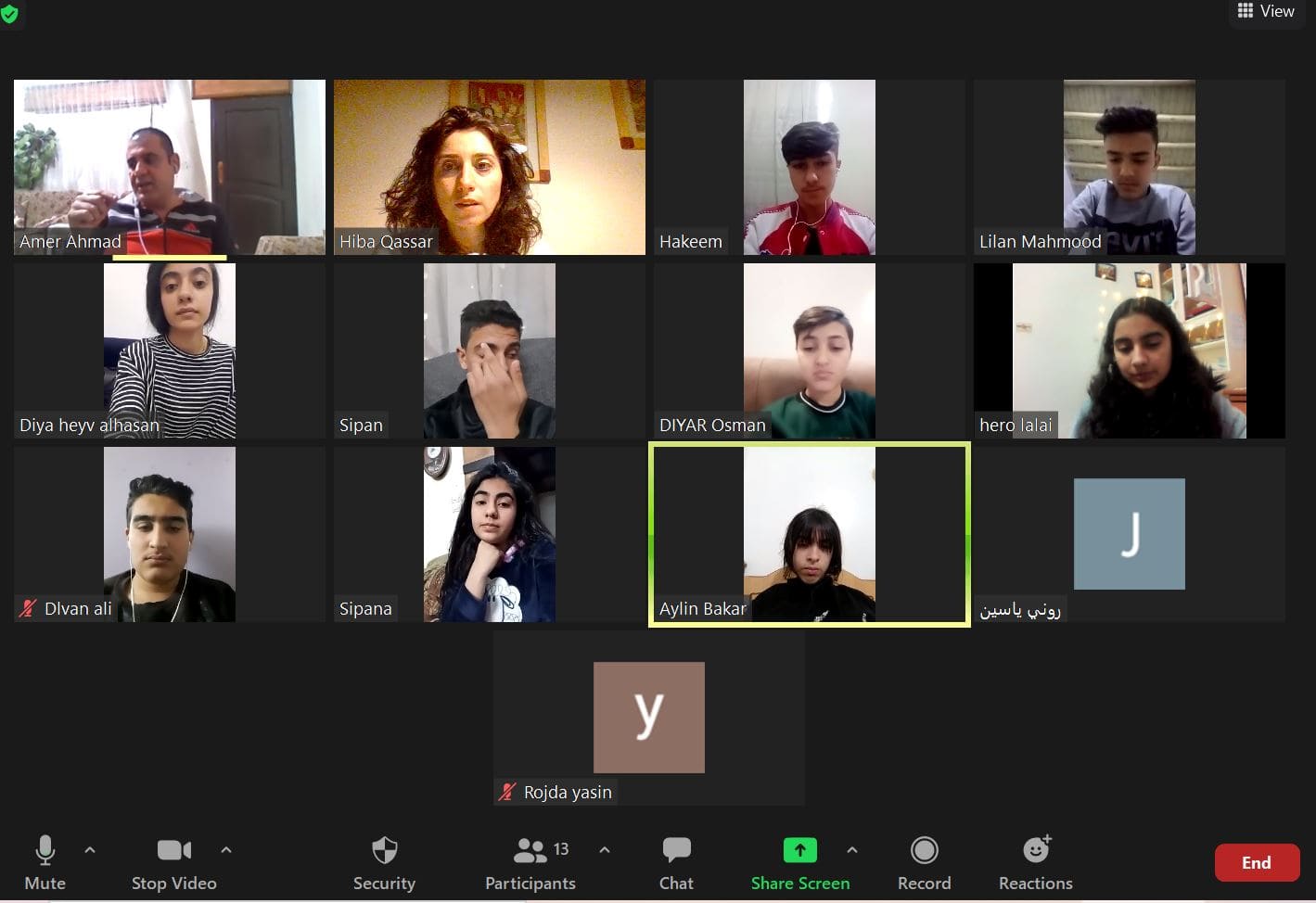 |
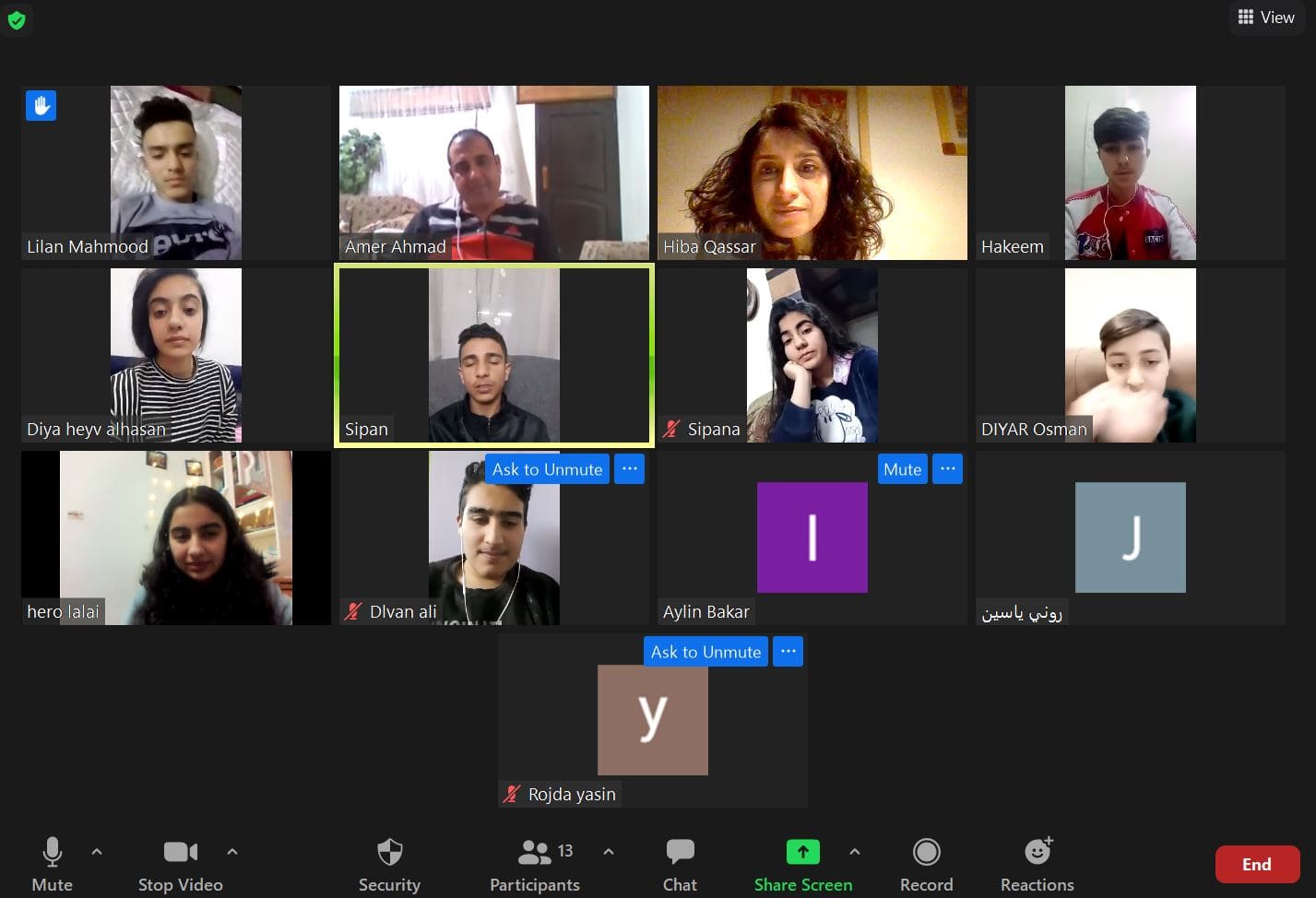 |
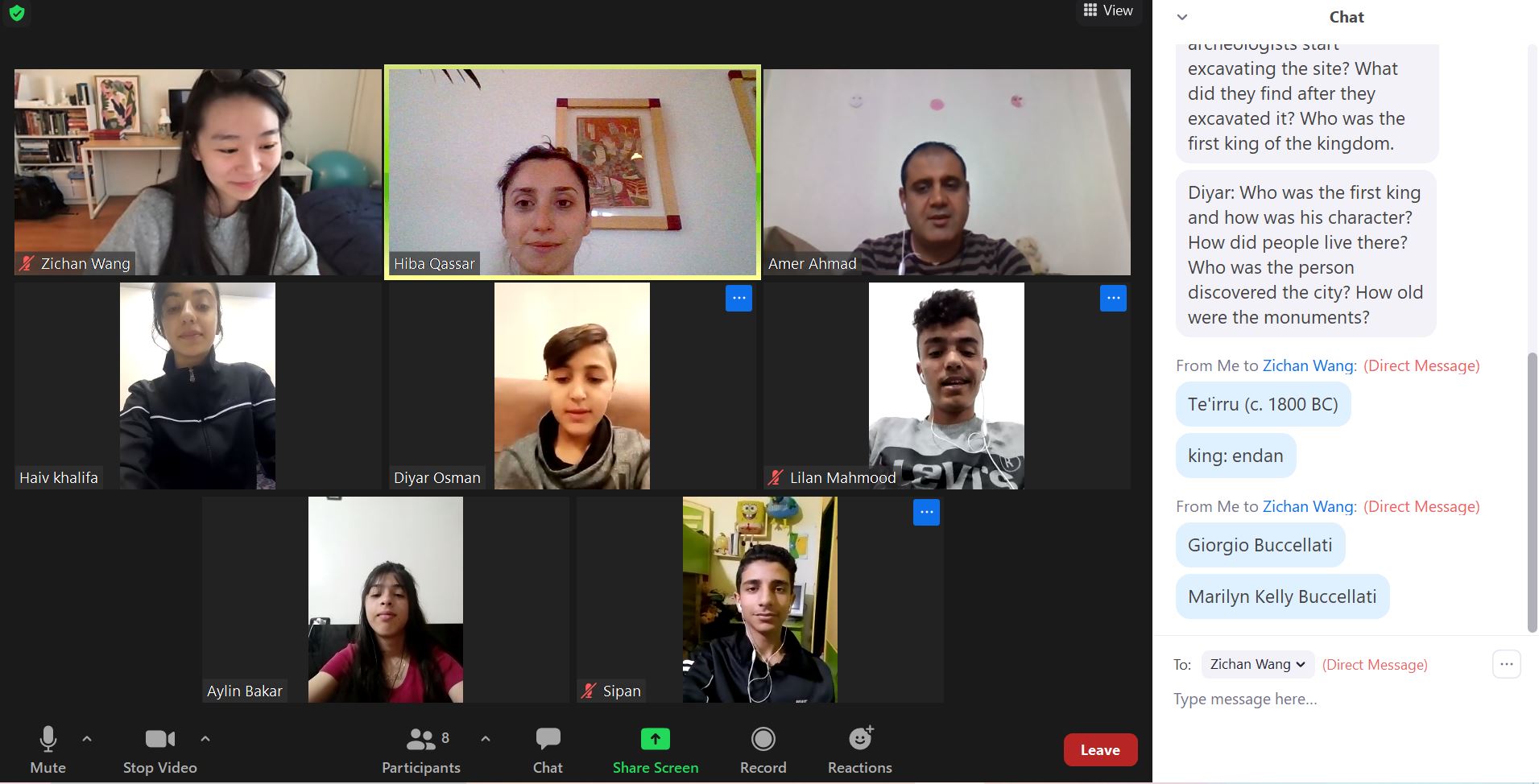 |
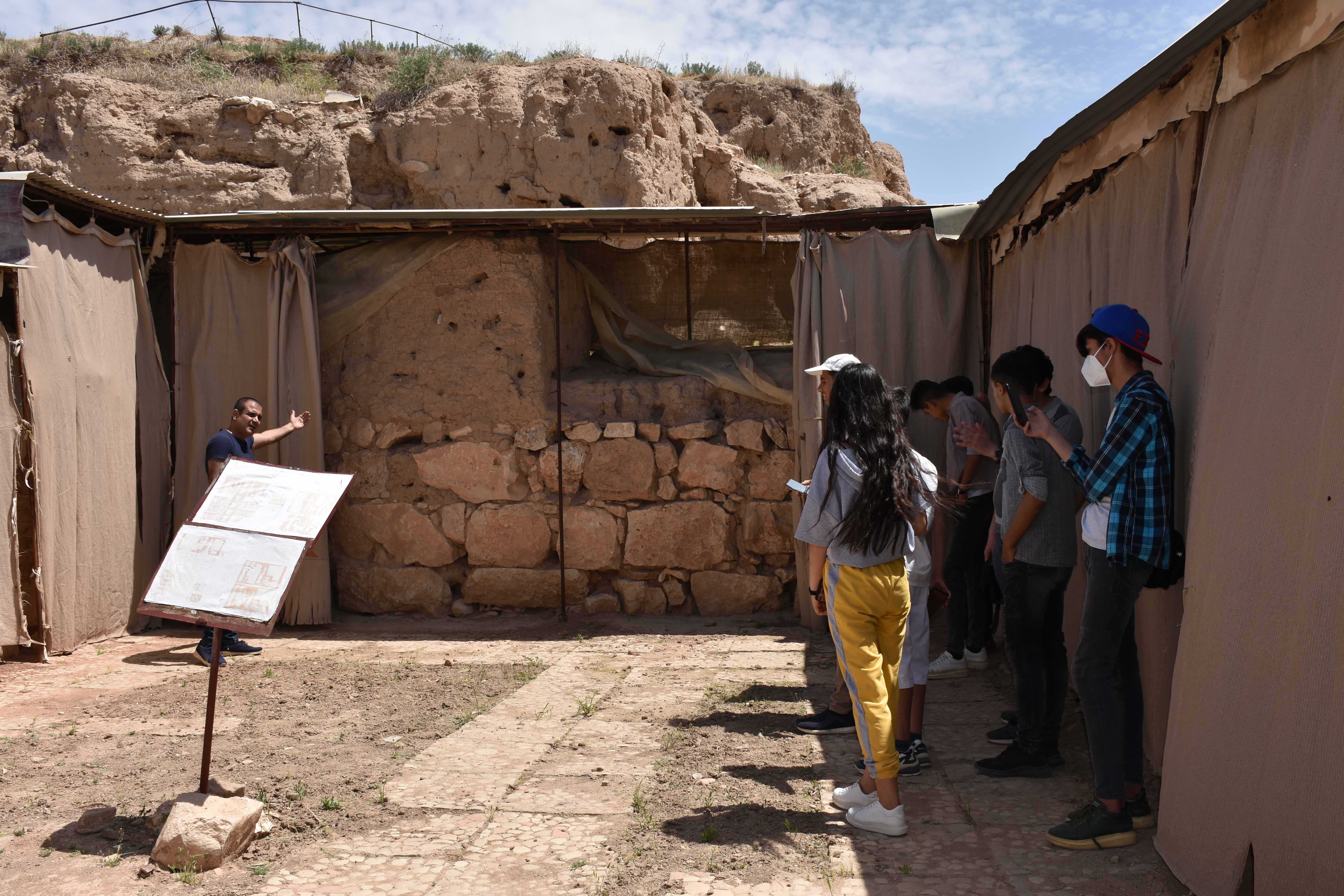 |
 |
 |
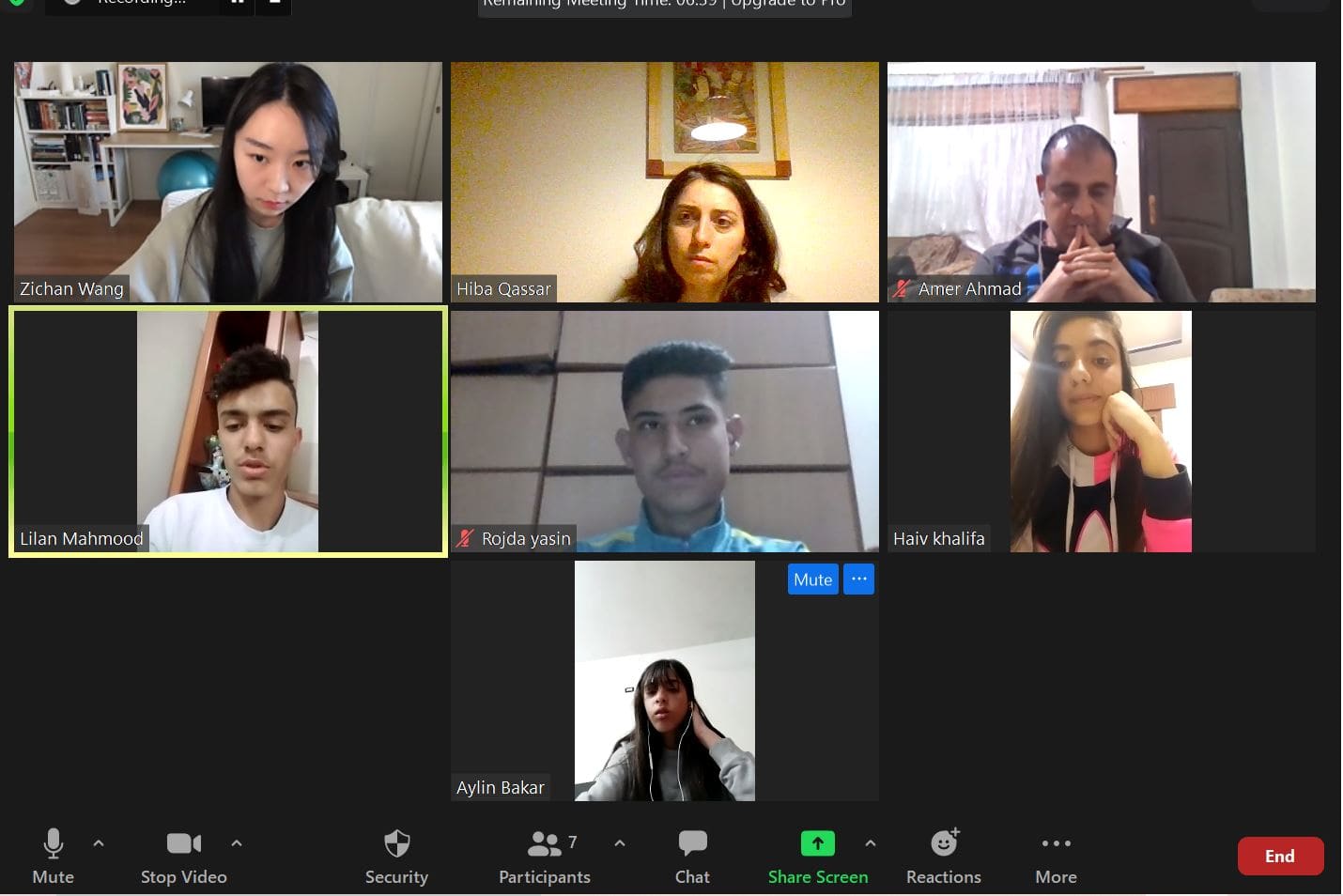 |
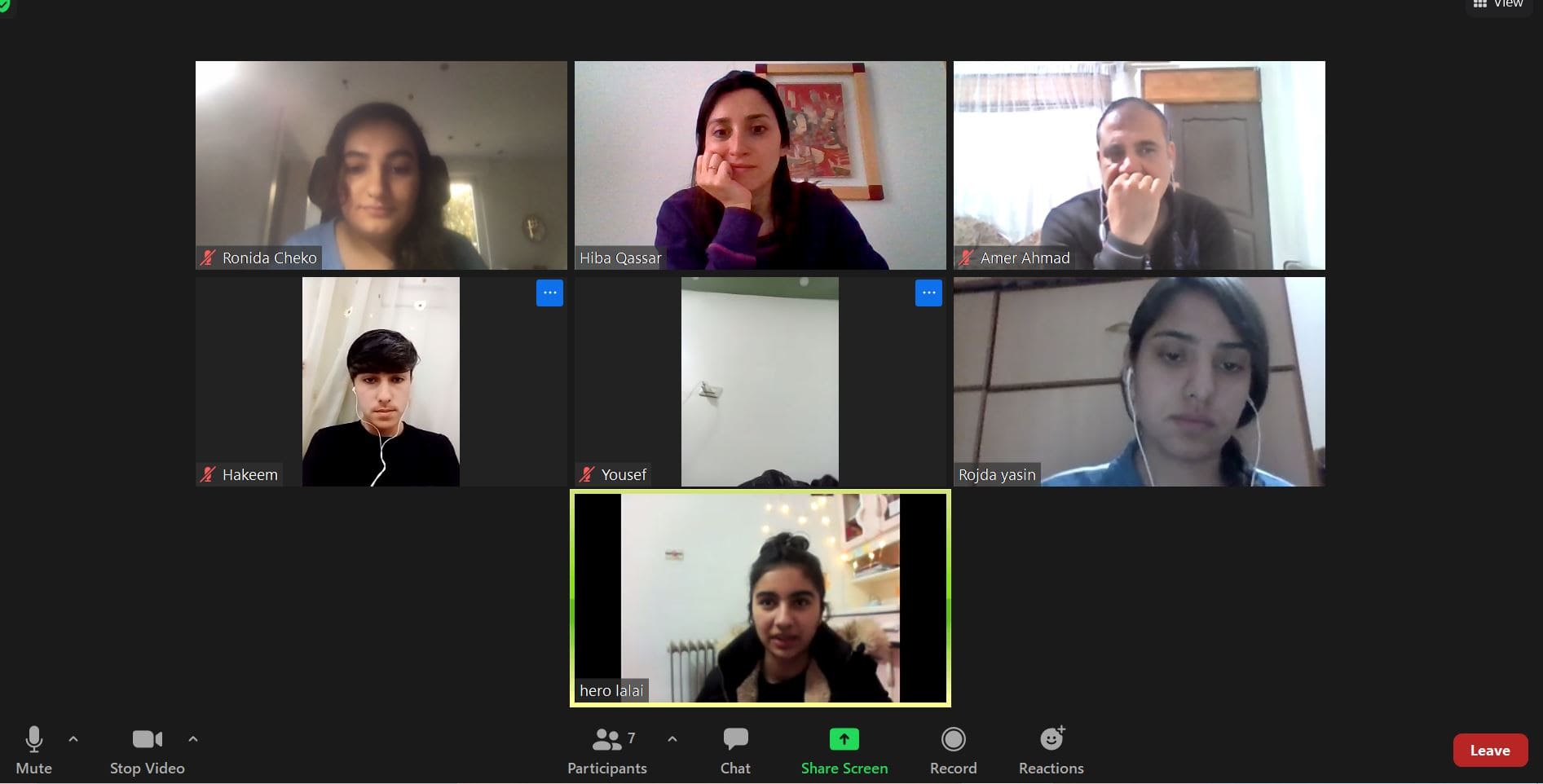 |
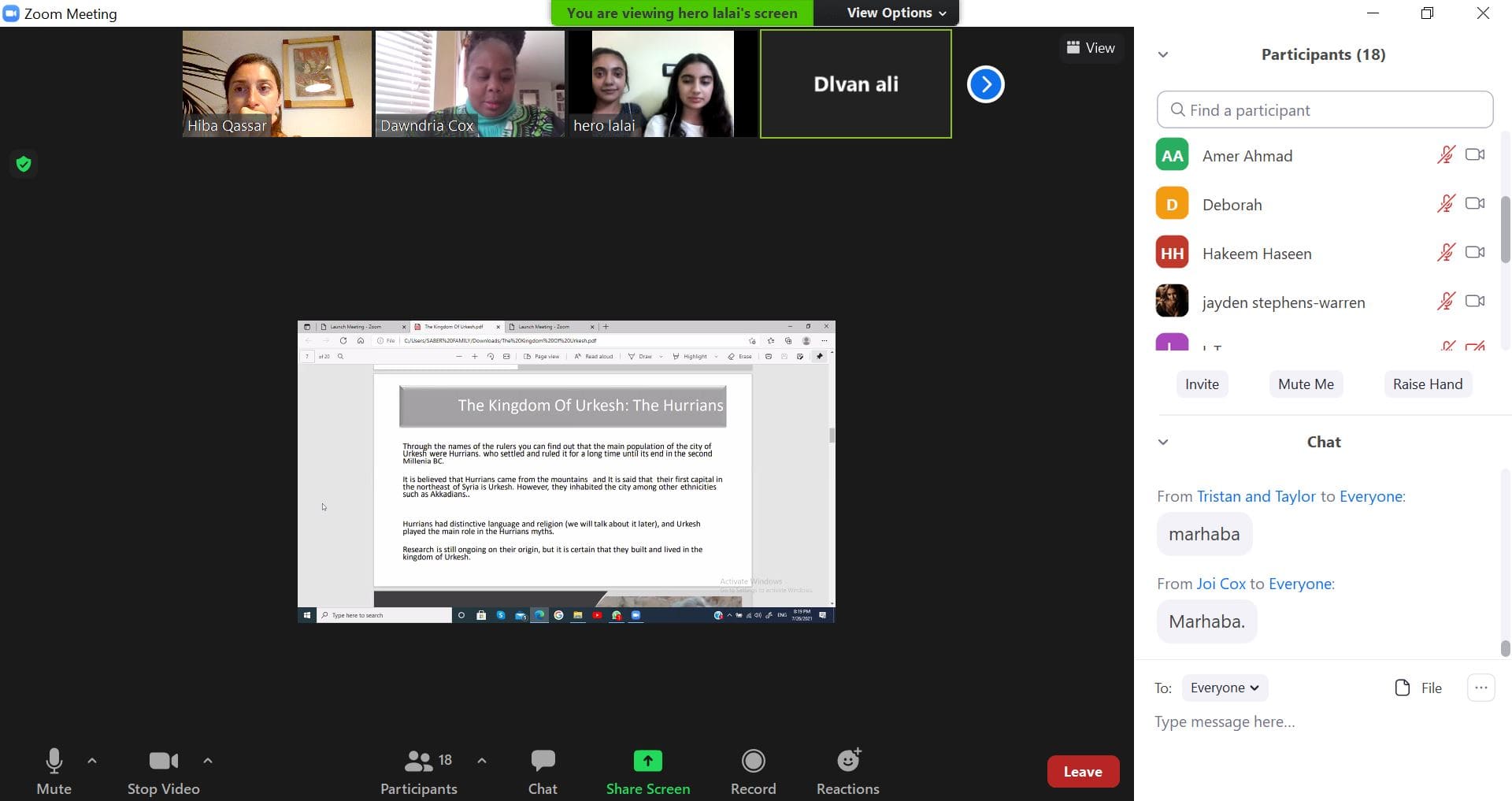 |
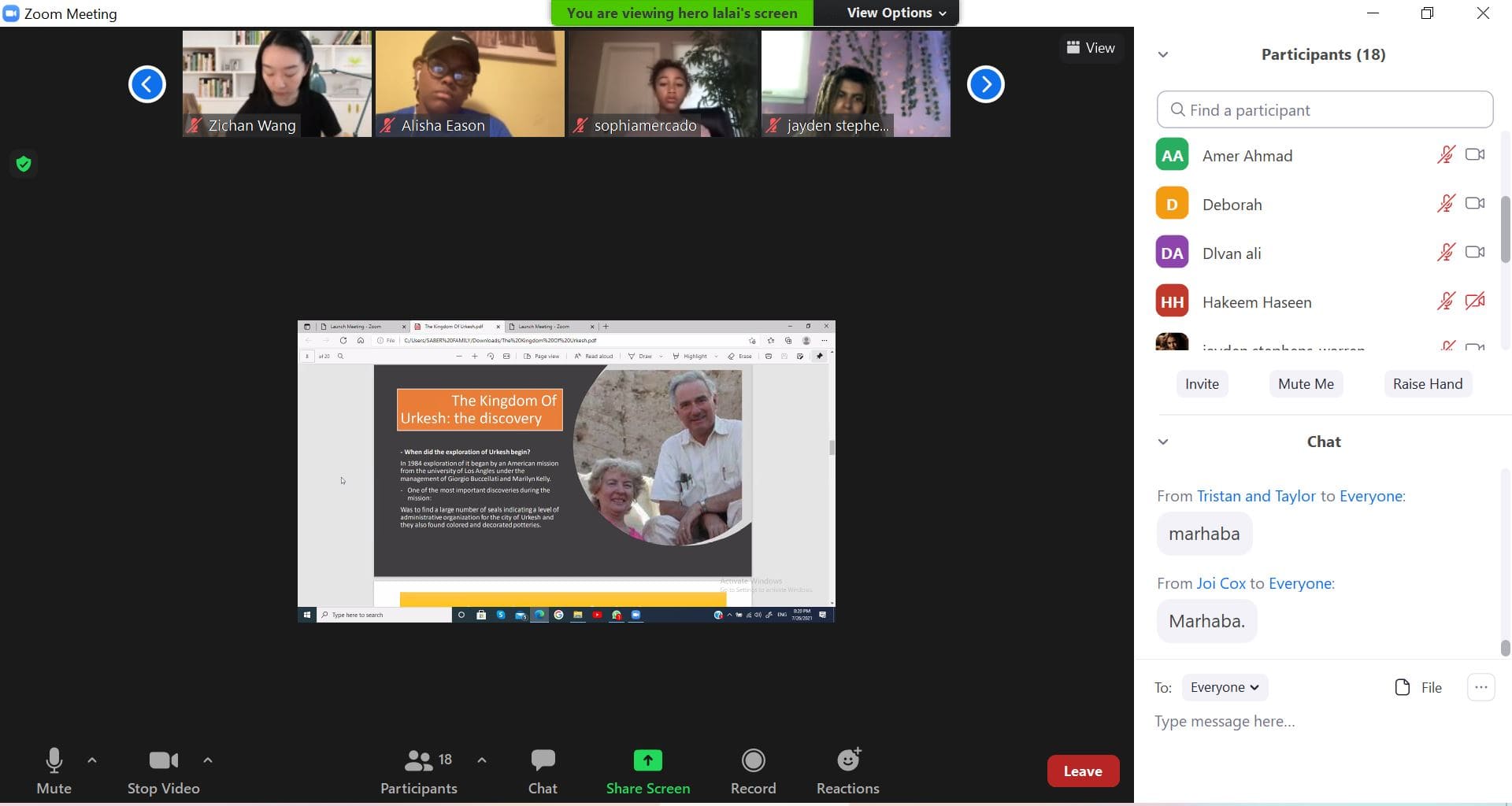 |
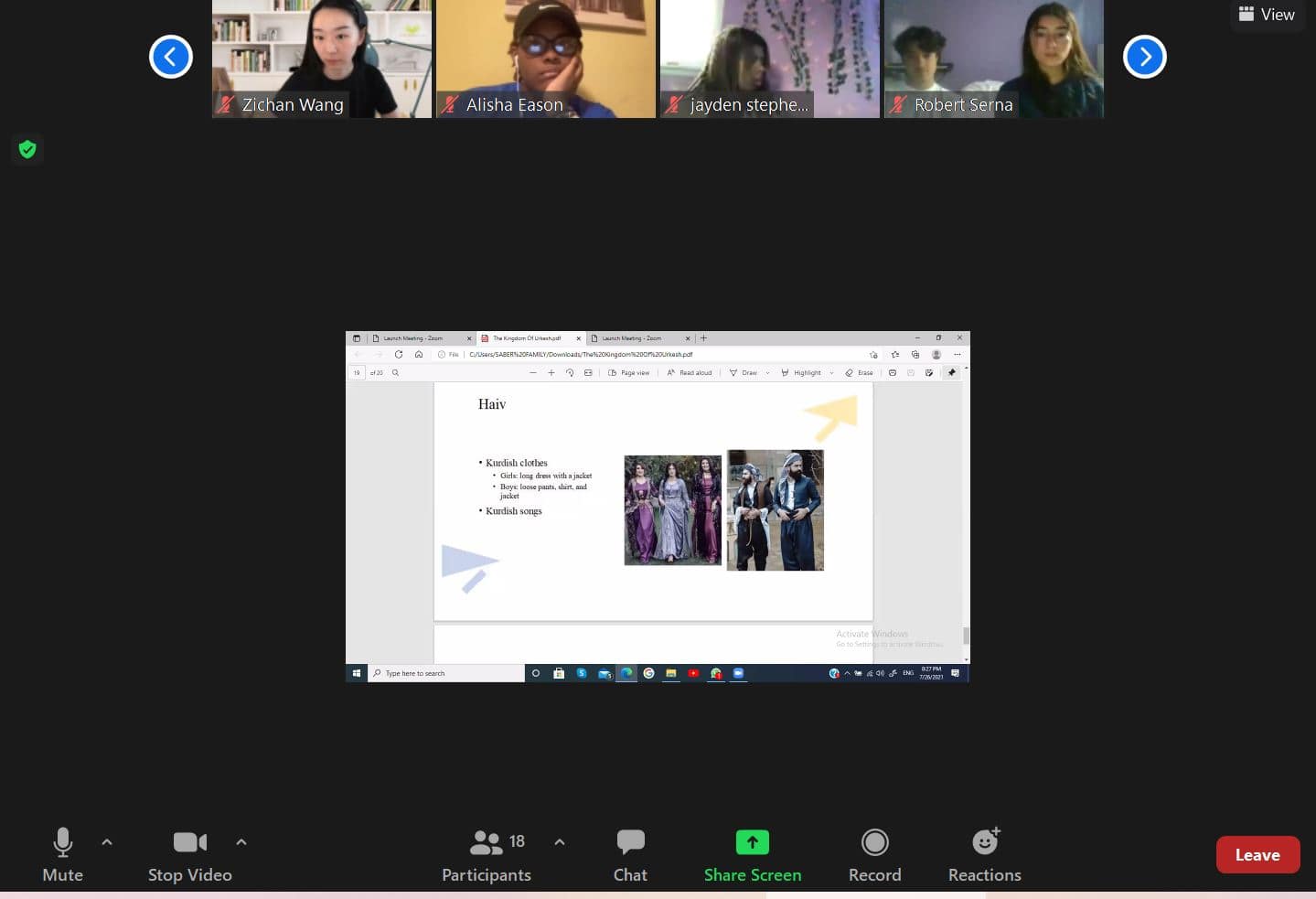 |
 |
 |
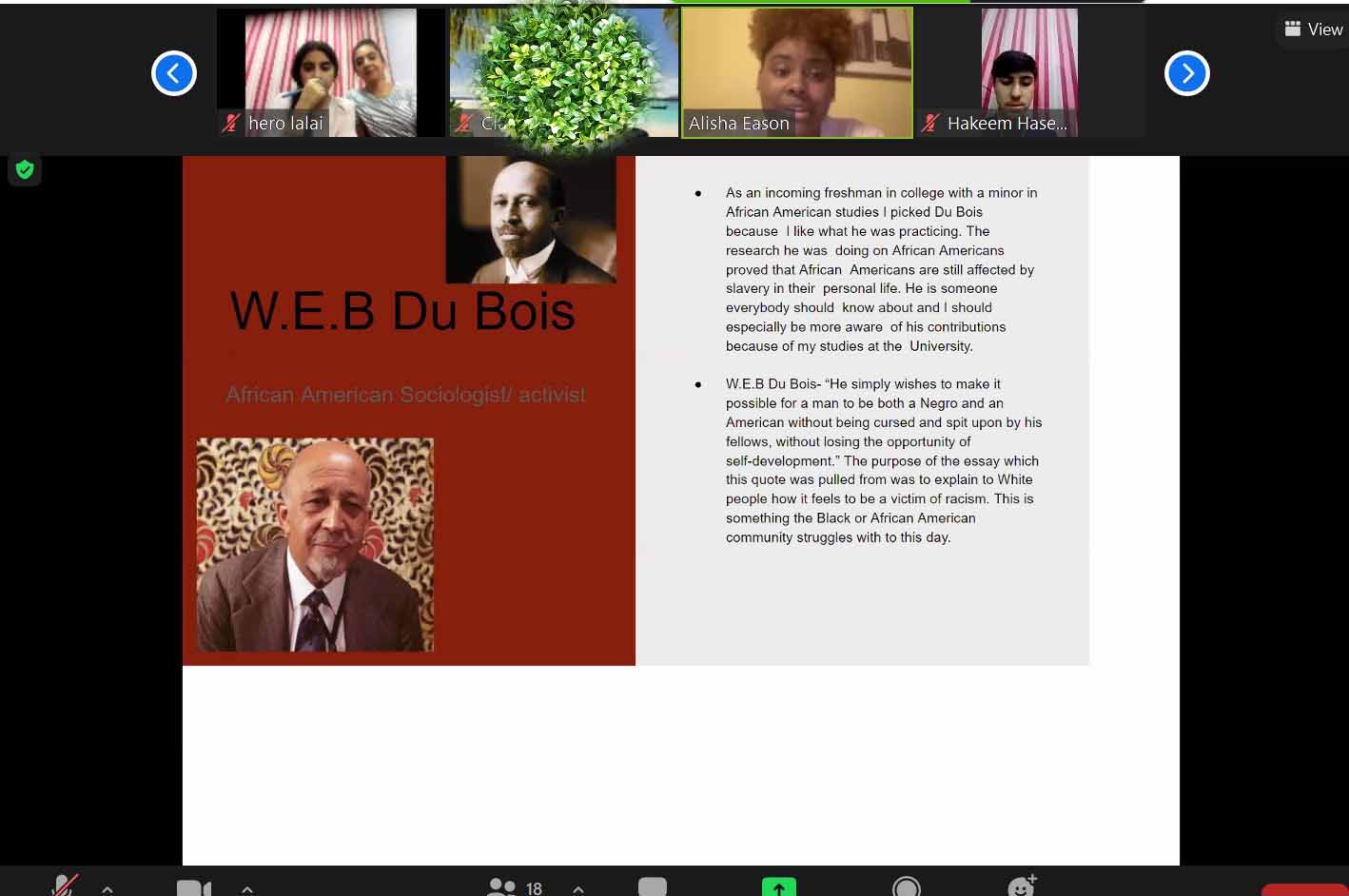 |
 |
Back to top
High schools
connecting Italy and Greece
|
During the academic year 2019/2020, the School Project acquired a new face: the success of the first year of the program, in fact, prompted us to broaden our horizons while maintaining our main purpose of bringing together students from different backgrounds who, through a personal and direct exchange, are encouraged to reflect on their heritage, the past, and the points of contact that unite them with peers living in different parts of the world. Thanks to the collaboration with the Steinmetz Family Foundation, we had the opportunity to open the School Project to the Greek city of Corinth, famous for its archaeological site. For several years now, the Foundation has been developing a pioneering educational program that revolves around the excavations carried out in Corinth - an educational program that in many ways resembles what we began to do in 2017, involving Syrian and Italian schools around the site of ancient Urkesh. |
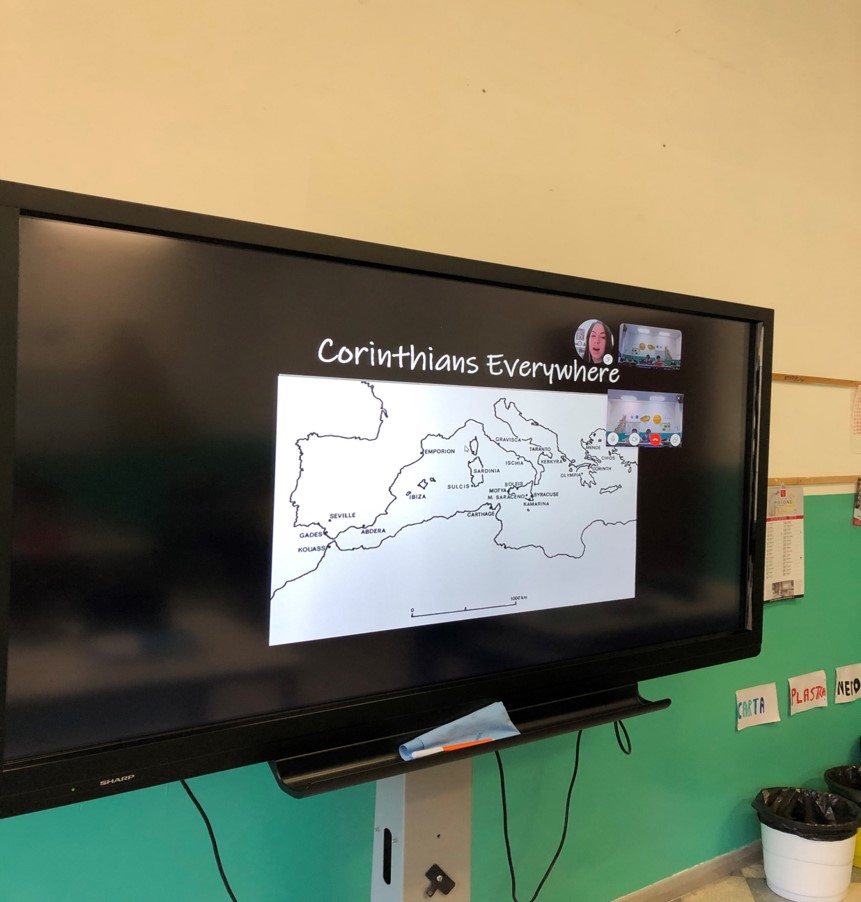
|
Thanks to the collaboration with Eleni Gizas, a Greek colleague working with the Steinmetz Foundation in Corinth, we offered a second class at the "Antonio Rosmini" High School of Human Sciences in Domodossola the possibility to create "virtual trips" to the Greek site through Skype conversations. Ever since October 2019, the students prepared themselves together with their professors, listening to lessons in Italian and English on the history of Corinth and the mythology linked to the ancient city. Then, in the following months of November and December students were able to listen to Eleni's lectures live from Greece, on the different archaeological phases of Corinth. |
| The enthusiasm and involvement shown in class by the students led the Italian professors to decide to undertake a twinning activity with a Greek high school located in the modern city of Corinth, the "Homo Educandus" High School. |
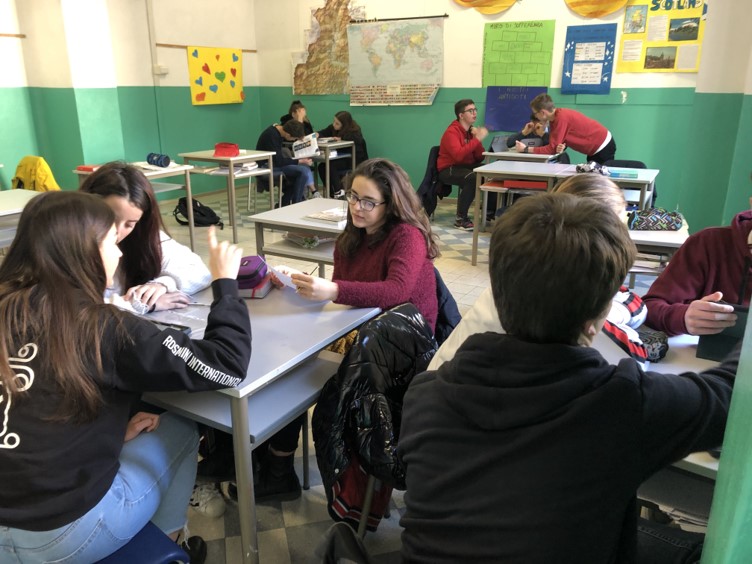
|
In the initial phase of the project, the exchange is taking place on the virtual platform offered by the E-Twinning "_blank"site: each class prepared a video presentation in English and then shared it with their peers online. Subsequently, students started to reflect together with their educators, and to confront themselves through the platform, on the existence of archaeological sites in Italy (in particular in Ossola) and Greece that can provide evidence of contacts and elements common to both cultures. |
| Certain that this experience will enrich all those who are involved in it, we are waiting to hear the students' voices to know how reflecting on the past has led them to better know their peers' present, and to imagine a future in which Italy and Greece are even closer! |
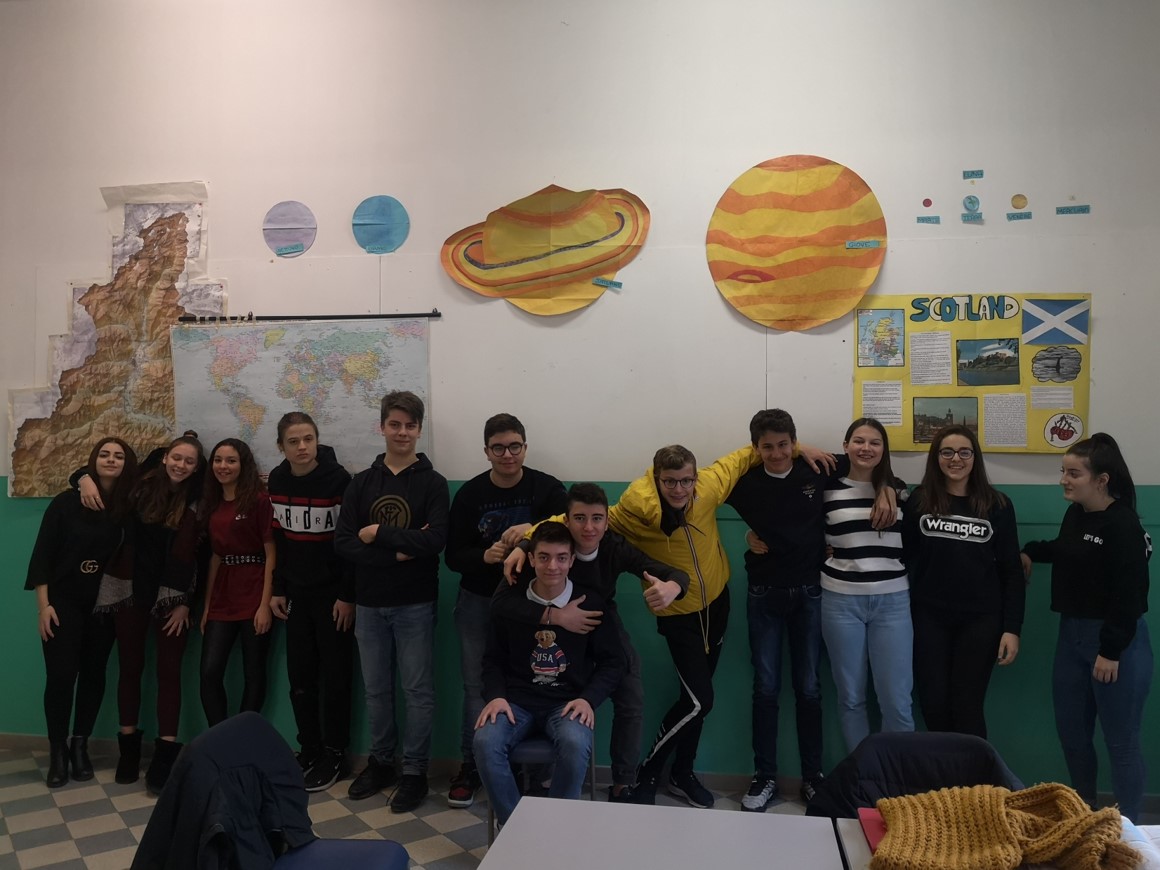 |
Back to top
Universities in Syria
seminars and workshops
|
For the young university students in Syria, we organize seminars and workshops that focus on the materials found at Urkesh. In this case, we focus on archaeology in the strict sense of the word. The fact that Urkesh may serve as a laboratory of excellence for these students' works (in particular the study of ceramics and topography, which today are both impracticable at other sites in the area) gives to our project a significant value on the scholarly level. |

|
2016: The Pottery Workshop In October of 2016, Mohammed Hamza (familiarly called "Ham[m]ade"), the man who has been responsible for the analysis of the sherds from Mozan in the last years, conducted a workshop on ceramic analysis for archaeology students at Qamishli University. We are proud that these students are now ready to benefit from such academic experience and that they could acquire a deeper archaeological expertise by analyzing materials from Tell Mozan. |
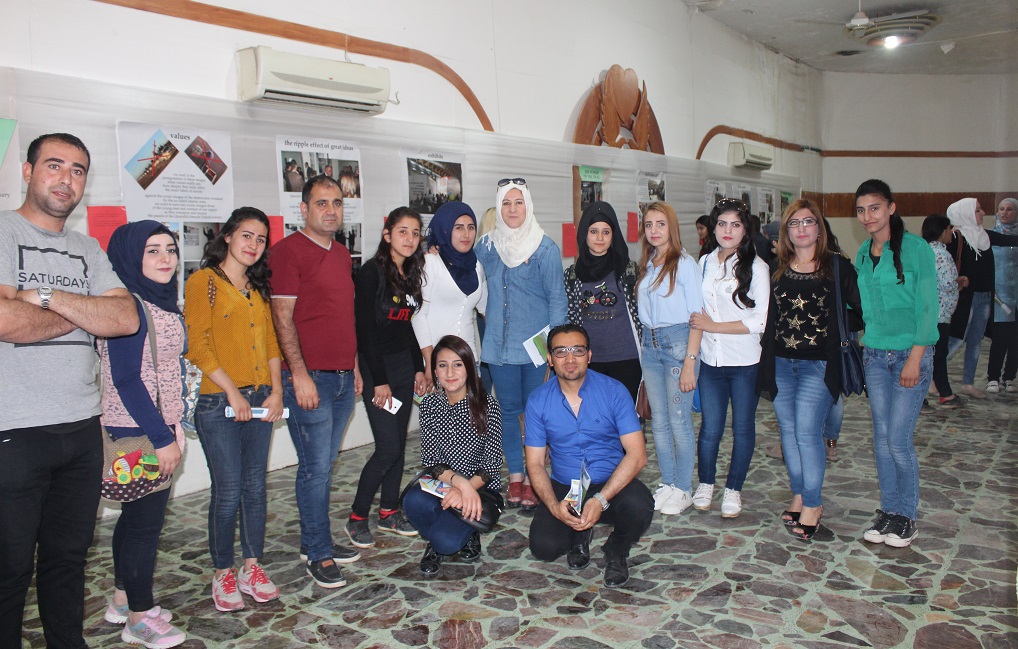
|
2017: The Exhibit in Qamishli In April 2017, on the occasion of the exhibit set up in Qamishli, we decided to rely on young people coming from the area around Mozan, because they were the ones who would be most involved in this exhibit and who could benefit the most from it. Therefore, we invited archaeology students from the University of Al-Furat, from the city of al-Hasakah, in addition to the universities and institutes recently established in Qamishli. They helped both with the set-up and the reception of visitors during the exhibit. |

|
2017: The on-site workshop In the summer of 2017, we gave to a group of twenty students from Qamishli University the possibility of a two-day seminar in excavation techniques: in fact, Urkesh was (and still is!) the only site in the region where it is still possible to study excavation techniques directly in the field. Other archaeology students came to Urkesh from Erbil, the Iraqi city where they attend the University, to visit the ancient structures and practice topography and excavation techniques. |

|
2019: The research seminar In May 2019, students from the Roj Ava University in Qamishli, together with our local collaborator Amer Ahmed and their teacher Sipan Ismail, organized a seminar on Urkesh at our site. Divided into research groups, they prepared presentations and written panels on various aspects of the excavations and material culture of ancient Urkesh which they presented to each other while standing on the large monumental staircase leading to the temple. The students' original panels can be found at this link, while here you can find an English translation of the texts. |